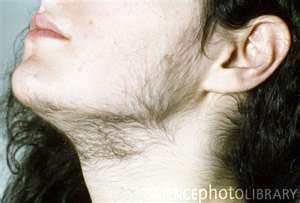Introduction
As a teenager you will experience hair growing from many parts of your body even as early as 12-years-old.
Don’t be alarmed by this. This is an indication of you growing into adolescence.
Hair will grow around your armpits, your private parts, your face, the back of your body, thighs and your chest.
Some of you will experience thicker hair growth and this can cause embarrassment especially to girls.
Hair growth is different for different ethnicity and race. So the rate of your hair growth is unique to you.
Signs
Abnormal hair growth is when you have excessive hair growing in your body or no hair at all.
It is more common to have excess hair than have less. The signs of excess hair appear on the upper lip (resembling moustache for girls), increased facial hair and sideburns.
You can also have hair growing from the nipples, hair around your chest and abdomen beyond the pubic area, your back and thighs. This can be distressing especially for girls.
Some boys will experience less hair growth compared to their peers. This too can make them less confident.
For girls, there is a condition called PCOS i.e. Polycystic Ovary Syndrome where girls have increased hair on the face and body, menstrual irregularities, obesity and acne.
For boys, if your hair growth is less and your private parts are not growing, you might have a hormonal problem that needs medical attention.
Complications
Abnormal hair growth can be a sign of a more serious health or hormonal problem.
Your self-esteem can be affected and socially, you might be shy to face your peers.
You will need to see your doctor to rule out hormonal problems like PCOS and other conditions like a testicular or ovarian tumour.
If you have PCOS, you may suffer from obesity and are at risk of having cardiovascular and metabolic conditions.
You can also have problems having children in the future as your fertility is impaired.
Treatment
Please see your doctor to rule out any serious medical problems. Your doctor carry out some blood tests and prescribe medications accordingly.
There are many ways to reduce excessive hair. Shaving, waxing, depilatory creams and threading are some of the common ways.
These methods can be painful and sometimes make hair grow coarser and underlying skin to be discoloured.
Laser and electrolysis (but are expensive treatments) that can also help in the removal of excess hair.
Prevention
Losing weight can help if you have PCOS. Losing 5-10% of your weight can reduce other signs of PCOS.
(Refer to healthy weight loss).
Treating the underlying hormonal disturbances can prevent abnormal hair growth.
You should consult your doctor if you are worried.
Reference
- Pic resource – http://www.thebeautybay.co.uk/wp-content/uploads/2013/04/Hirsutism.jpg
| Last Reviewed | : | 11 September 2013 |
| Content Writer | : | Datin Dr. Sheila Marimuthu |
| Accreditor | : | Dr. Thiyagar Nadarajaw |








